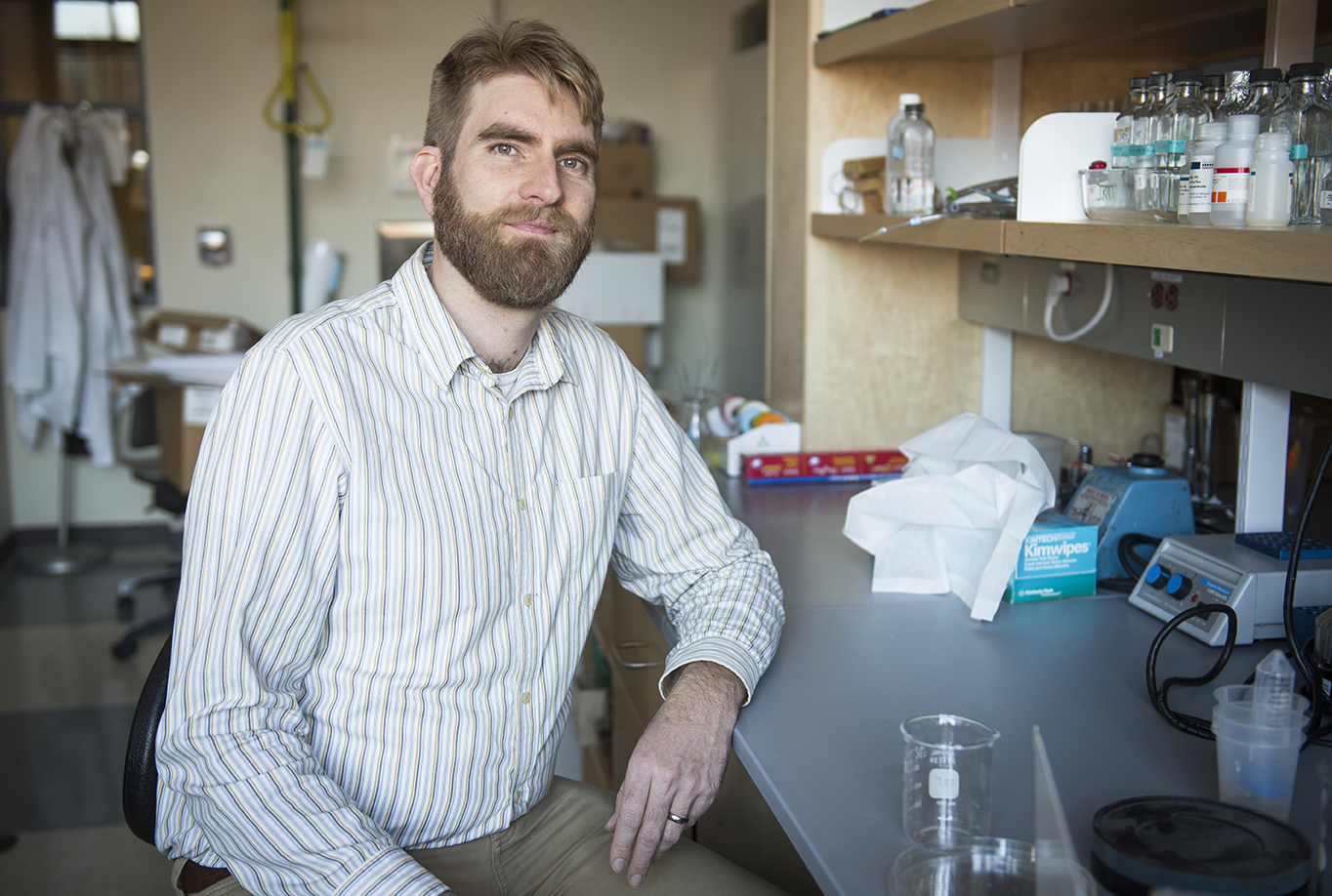Professor Nathan Ahlgren’s biology research will go viral with help of NSF grant

It’s common knowledge that viruses attack human hosts — causing illnesses ranging from the common cold to serious public health crises like the COVID-19 pandemic — but the reality is that the vast majority of viruses on our planet infect microscopic organisms, including bacteria. To better understand the complex patterns by which marine viruses infect particular photosynthesizing bacteria, Clark University biology Professor Nathan Ahlgren and Dr. Marcie Marston of Roger Williams University in Rhode Island have been awarded a National Science Foundation grant that will support collaborative research between their labs.
The $1.12 million grant, which includes $724,000 in funding for researchers at Clark and $391,753 for researchers at RWU, will allow the teams to work together on a study of Synechococcus, a type of cyanobacteria that is estimated to carry out roughly 15 percent of all photosynthesis in the world’s oceans. These cyanobacteria — and bacteria in general — are frequently infected by viruses, but it remains unclear which bacteria are infected by which virus. To address this gap in knowledge, the researchers will isolate hundreds of strains of Synechococcus and hundreds of strains of viruses from Narragansett Bay. Through their research, they hope to determine the degree to which these microorganisms can infect each other and identify specific genes that control cross-infection.
“The aim of this project is to study interactions of particular bacteria in the ocean and the viruses that infect them, but we hope that this will help us better understand virus-host interactions for other bacteria more broadly in the oceans and other habitats (soil or freshwater), which are natural and important parts of our planet’s ecosystem,” Ahlgren says. “So while the viruses we are studying don’t infect humans, they have an impact on the health of our planet, and indirectly on our health and well-being.”
After isolating the cyanobacteria and virus strains, the team will conduct an experiment to determine which virus strains can infect which Synechococcus strains. They also will sequence the genomes of all the strains to determine how closely related the bacteria and viruses are, and whether that relation impacts their ability to be infected or resist infection. The genomes will then be used to determine whether there are specific genes that control if, and how, viruses can infect certain Synechococcus cyanobacteria.
Finally, the team will collect DNA samples from Narragansett Bay to track how different species of Synechococcus and viruses change over time — from year to year and over seasonal cycles — and connect that to patterns found during the infection experiments and genome analysis.
“It is estimated that about a third of the bacteria in the oceans are infected and killed by viruses each day. However, the details of which particular bacteria are getting infected by which specific viruses is still a black box,” Ahlgren says. “We’re trying to peek into that box and shed light on the details of these important infection cycles.”
The NSF grant will support several undergraduate student researchers, a graduate student, and a postdoctoral fellow who will also receive training in effective practices in teaching science at Clark. The study’s results will be integrated into undergraduate courses at Clark and outreach activities for local high school juniors and seniors in Rhode Island. Ahlgren says he plans to incorporate some of the research into his course, The Genome Project, in which students sequence, assemble, and analyze the genomes of bacteria and viruses. Work by students in the spring 2019 course was recently published in the peer-reviewed journal Microbiology Resource Announcements.
“That was an exciting class for the students and me because while we were analyzing the sequence data for the target Synechococcus strain, we unexpectedly discovered a virus also present in the culture, and we ended up publishing analyses of both genomes,” Ahlgren says.
He adds that the upcoming research project is a perfect collaboration that brings together his and Marston’s respective expertise as they study the interactions of viruses and their hosts. Ahlgren has researched Synechococcus for years, while Marston has focused on cyanobacteria viruses on the doorstep of her lab on Narragansett Bay.
“One of the nice things about this research is that it is local, and our sampling just requires dipping a bucket into the water off of the dock,” he says. “Unlike other oceanographic research, we don’t need to use a research vessel and we can easily get the samples from our collaborator in Rhode Island, as long as travel restrictions allow.”


